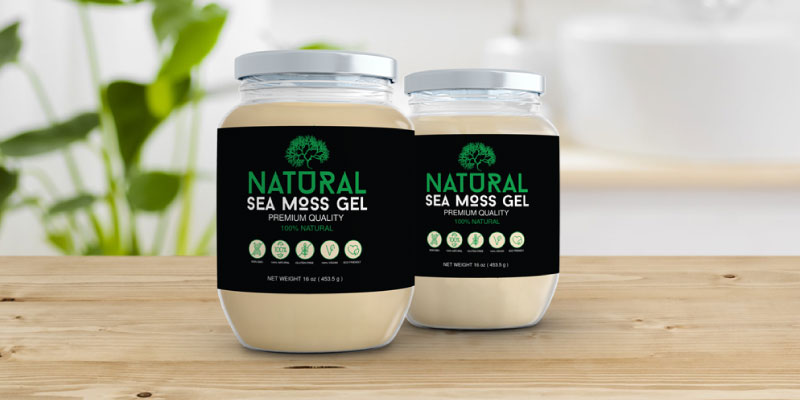The label of a product contains all the information a consumer may possibly need. Without ever opening or tasting a product, consumers can learn about its qualities and characteristics from its label. The labels allow consumers to assess the quality of the product. This is the reason every business needs to seek help of any professional digital marketing company in the UK.
The label provides details about the cost, value, and quantity of the product. This knowledge can help consumers make informed choices. The label’s information enables purchasers to quickly compare various products.
Packing and Labelling Are Important


The significance of packaging and labelling services is sometimes undervalued in the world of online sales. Although the product’s quality is crucial, the way it is packed also matters greatly. When a buyer sees your product for the first time, packaging and labelling are crucial. Let’s examine the significance of packing and labelling in the online retail sector.
-
Reduces the Return Rate
If you want to generate repeat business, regardless of whether you sell gadgets or food, you must not ignore the impact packaging and labelling services have on the consumer. Both retail and internet sales are subject to this.
Attractive packaging in a store draws customers’ attention away from other items on the shelf. Consumers who make internet purchases enjoy the unpacking procedure.
As a result, packing is very important in determining how the product is received by the customer. Initial impressions matter a lot. Products with poor packaging and labelling services may receive more returns. You can also get negative feedback.
Customers learn about the quality of your products and the care with which they were made based on how they receive them. Customers’ faith in your product might grow when it is appropriately packaged and labelled, and they may become more eager to open the package.
-
Brand Awareness
Maintaining brand recognition is made easier with uniform labelling and packaging for all products. To guarantee that customers are familiar with the calibre of the product, brands should make sure they provide the same information across all platforms. Also, it improves product recognition in both offline and online markets.
You may also think about whether the packaging and labelling of your products should be the same for both offline and online markets. Online goods come with additional packing in the form of cardboard or corrugated boxes, so you can imagine different or basic packaging for them.
-
Designing Packaging: Principles
The best methods for product labelling and packaging must be used. Your packaging’s design must explain how the goods and services work. Use bold colours and colourful images as a consequence in your design. Inform your clients how your offering will fulfil their needs.
For your products, you can also utilise environmentally friendly or sustainable packaging. Nowadays, more consumers opt to purchase goods that are packaged responsibly since they are more aware of the environment. Think about creating packaging that is completely recyclable or biodegradable.
Another important aspect of your label is its design. It is essential to pick a label design and use it consistently throughout all of the packaging. In the world of online shopping, a shipping label is an additional label.
The Distinction between Labelling and Packaging


You probably have concerns regarding packing, labelling, and other words as you labour to get your products ready for buyers. While you’re creating and producing your items, it’s crucial to know the differences between packing and labelling even though they have some key similarities. To find out more about how packaging is used to contain items, keep reading. But before that don’t forget to audit your business, as it is also important to have check and balance of each and every activity of your marketing plan.
Describe Packaging
Designing a package and creating the promotional products containers are two separate but related processes that make up packaging. The packaging serves to safeguard a product so that it can be transported safely. Packaging can support a brand and aid in product identification for store employees.
Packaging frequently consists of the following materials;
Wood, metal, paper, cloth, cellophane, corrugated/cardboard, plastic, polythene, and Styrofoam
What Kinds Of Packaging Are There?


There are three different forms of packaging. The most common types of packaging are; According to Statista, by 2024, it is anticipated that the U.S. packaging and labelling industry would generate over $10.4 billion in revenue.
- Primarily: The product comes into contact with this kind of packaging. It is offered alongside the product and directly contains the product.
- Secondary: This includes any further packing layers that are offered to prevent damage. When a product is delicate or poses a greater risk of leaking or breaking than other products, secondary packaging is frequently used. Since it is located on the inside of the package, this packaging is frequently discarded after opening because buyers normally find it to be less visually appealing.
- Transportation: During transportation, a product is protected with this layer of packing. It makes the merchandise more secure for transportation and prevents the product from going bad.
What Advantages Do Packages Offer?


There are various advantages to using product packaging, including;
- Preventing Contamination: Your products can become contaminated by microorganisms, chemicals, and other factors.
- Stops Leakage: Whether your items are made up of a single liquid component or a number of tiny solid components, effective packaging can prevent things from leaking or flowing out.
- Slowing The Rate Of Spoilage: When perishable goods are properly stored, they remain fresh for longer.
- Protection from Harm: While in transit, your goods may sustain damage. Packing helps to avoid breakage and damage.
- Providing More Consistent Temperature Control: Packaging can also shield your goods from extreme heat.
Labelling: What Is It?
The act of labelling involves covering a product with a visually appealing wrapper or seal. The two main functions of a label are to draw people to the goods and provide information.
A label reads:
- The brand of the item
- For customers to consider is the pricing
- The barcode allows for quick scanning
- Your business’s name or logo
- The quantity or number of products that are included
- The product’s calibre or grade
- Specifications of a product any mandatory details owing to laws or regulations
- A product’s components or elements
- Product guidelines
- Codes for inventory
- The product weight and the batch number
- The date of expiration
- Recommendations for disposal and storing
- Information about safety
What Kinds Of Labels Are There?


Information that is essential to suppliers, retailers, and customers can be found on a product’s label. They are crucial for maintaining product organisation and adhering to any rules on the kinds of materials that can be legally sold at specific levels of quality. There are numerous types of labels to signify specific information, but they are often put to the front of the product packaging with a sticker.
A label may be categorised as:
- Brand Labels: They give a product’s fundamental facts.
- Grade Label: This type refers to significant characteristics and product quality.
- Labeling That Describes: This type focuses on how a product is used.
- Informative Label: This kind offers extra details that a customer may wish to know.
What Are the Primary Distinctions Between Labelling and Packaging?


While the processes for packaging and labelling are distinct, both are necessary for the sale of goods in retail establishments and their delivery to consumers. While labelling serves to offer important information about the goods via printed text, logos, artwork, or other designs, packaging’s main purpose is to ensure that the product is safe to transport, store, and sell.
It can be simple to mix up packaging and labelling or believe that any manufacturer can accomplish both as they are both necessary. The following are the primary distinctions between packing and labelling for selling your products;
-
The Purpose
All types of packaging are intended to provide some level of protection, and primary packaging aims to make a product appear alluring to consumers with appealing colours and graphics. The main goal of labelling is to inform and educate consumers about the contents.
The goal of marketing a product is shared by both packaging and labelling. Although labelling only offers a brief description, it also serves as a marketing tool. You can persuade them to buy your product by using a clever product description on the label.
-
The Concept
In order to make the text on labels stand out, designs are often kept basic. The label must be simple to read in order to ensure that the description and other information properly convey a sales message to customers.
More intricate packaging designs that take advantage of the product’s overall visual presentation are possible. Packaging is a crucial marketing tool that can contribute significantly to the perception of your company that consumers will have. Your packaging should be as inventive and appealing to the eye as possible.
-
The Mission
The purpose of labelling is to connect with customers and tell them of the features and critical details of the product before they decide whether or not to make a purchase. This information may include a drug’s composition or the nutritional value of a food item.
Packaging has two purposes: it adds aesthetic appeal and protects the goods. Packaging serves largely as a marketing technique that can protect the product from damage and dampness.
-
Regulations or Legal Requirements
In order to meet government criteria, labelling is crucial. Depending on the nation where the products are made and marketed, different legal requirements may apply. For the health and safety of the consumer, food goods sold in the United States must accurately display the ingredients, the number of calories in a serving, and the essential nutritional data.
Moreover, packaging must meet certain standards, particularly for perishable food items. The environmental impact that a product is permitted to have may also be regulated in some nations, which makes sustainable materials appealing to some businesses and essential to others.
Conclusion
A customer’s choice of a product is made in a matter of seconds. Making exact yet appealing packaging for your product is so crucial. You must include information about your goods, either on separate labels or directly on the package.
Many essential elements of a well packaged product are the brand name, colour scheme, Logo, tagline, and product information. Although packing and labelling may seem like a straightforward operation, businesses cannot ignore it. It improves brand loyalty, keeps your goods secure, and, most crucially, drives up sales. If you are looking for packaging and labelling service and cheap promotional products in the UK, then get in touch with Logo Designs Company.


